
Max. 1x pro Monat Fisch auf den Tisch – mehr dazu hier.

Max. 1x pro Monat Fisch auf den Tisch – mehr dazu hier.
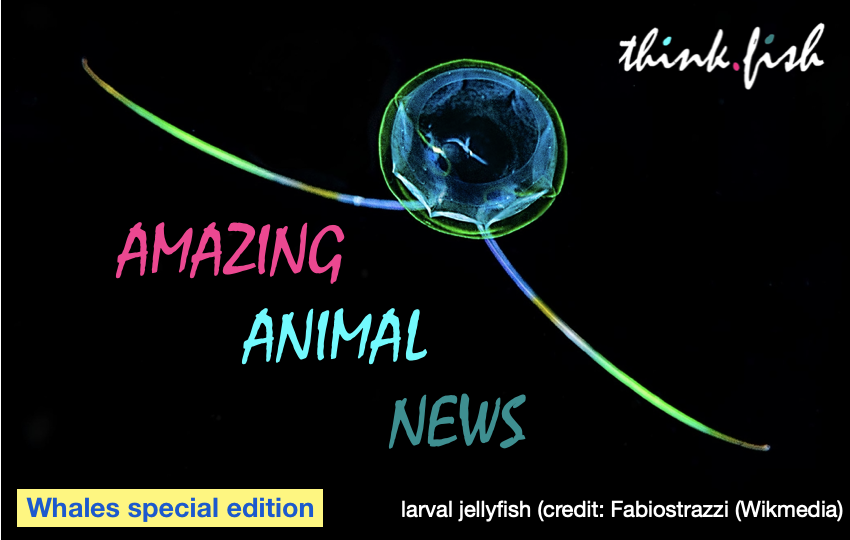
We know so little about life in the oceans. We find that a Humpback whale (Megaptera novaeangliae) did travel from the west coast of Latin America to the east coast of Africa, i.e. more than 13,000 kilometer, an extraoridnary long migration for an individual of this species, scientists say and puzzle over what could have caused this whale to go that far — mental confusion? desperately looking for a mating partner? However, we should also envisage that this individual behaviour is not so exceptional. The long-distance swimmer has been detected thanks to a new fluke recognition software, so, more long-distant travelling conspecifics could be detected in future.
More…
We know so little about life in the deep sea and what will happen when the industry starts digging there. Just one example: The Sea of Cortez between the Baja California peninsula and the Mexican mainland is one of the few hotspots for whale sharks known to migrate in the Pacific and also dive in the zone around Clarion-Clipperton Island, a key area for deep-sea mining in the Pacific. Whatever happens there will have its consequences in the Sea of Cortez, 2000 kilometres to the north, where global warming is threatening marine life and posing challenges not only to the whale sharks but also to local fishermen and people who live from tourism. This is one example of why the organisation ‘The Ocean and Us’ has launched its petition ‚to call on all governments to take a firm position against deep-sea mining‘.
More…
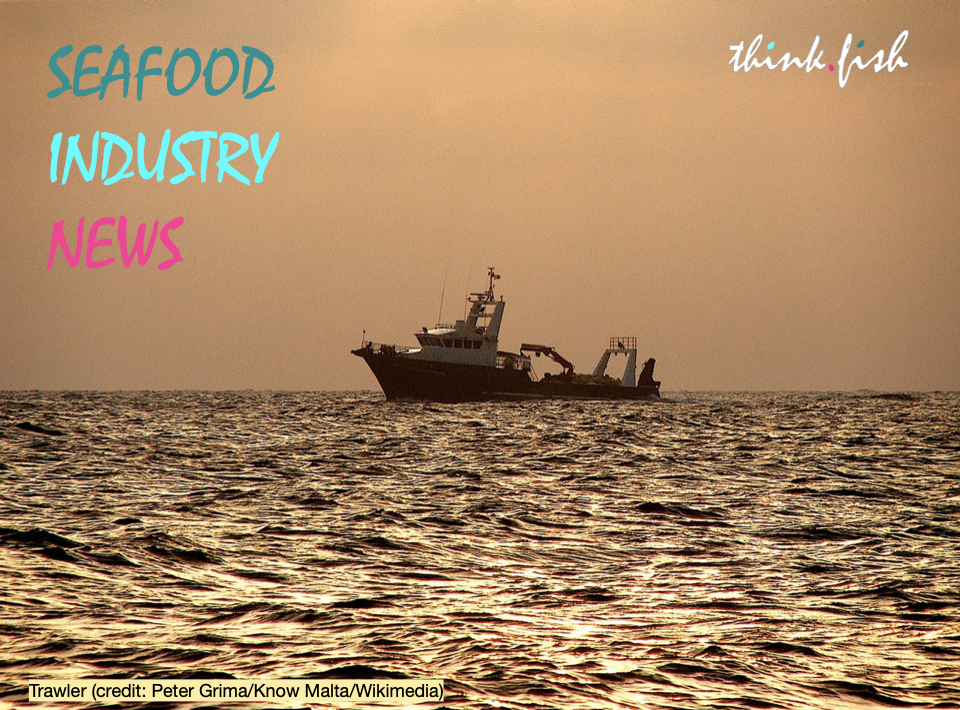
An outlook [1] from the UN Food and Agriculture Organisation (FAO) for 2024 predicts a slight increase in fisheries yields of 1.1%, while aquaculture is expected to grow by 3.1%, supported by a downward trend in fish meal and fish oil prices. On the other hand, the value of global trade in fish and seafood is expected to fall by 1.2%, although the volume will continue to increase by an estimated 1.0%. The development of consumer demand is uncertain due to inflation and the expected tariff increases by the next US administration. It is still too early to say whether this will lead to a fall in demand and how many lives of wild and farmed fish would be saved as a result.
More…
Wissenschaftler in Singapur haben gezeigt, dass aus Abwasser der Verarbeitung von Sojabohnen Fischfutter gewonnen werden kann [2]. Dazu leiteten sie das Wasser in Bioreaktoren, wo die im Wasser enthaltenen Nährstoffe von Mikroorganismen im Lauf von vier Monaten in einzellige Proteine verwandelt werden. In einem Vergleichstest erwies sich so hergestelltes Futter als ebenbürtig mit handelsüblichem Fischfutter.
Zweifel sind allerdings angebracht. Zum einen dauerte der Test nur 24 Tage, ein kleiner Bruchteil der Lebensdauer von Zuchtfischen. Zum zweiten stellt sich die Frage, ob denn genügend Abwasser zur Verfügung stünde, falls dereinst immer mehr Fischzuchtbetriebe auf das neue Futter umsteigen möchten. Der weitaus grösste Teil der Sojaernte wird zu Tierfutter für die Fleischproduktion verarbeitet, also für eine Produktion, die aus ökologischen Gründen langfristig stark zurückgefahren werden muss. Nicht zuletzt, um die Abholzung weiterer Flächen für die Sojaproduktion zu stoppen. Das Abwasser aus der Sojaverarbeitung dürfte also dereinst knapp werden.
More…
We all know that the fishing industry would be dead without the billions in subsidies from the major fishing nations — industrial fishing would simply no longer be profitable.
The same seems to be true for industrial aquaculture. In April 2024, the lobby group ‚Stronger America Through Seafood‘ (SATS) called [3] on the US Parliament to support aquaculture with 39 million US dollars: 25 million for the National Oceanic and Atmospheric Administration’s (NOOA) ‚Aquaculture Strategic Plan‘ and 14 million for NOOA’s ‚Sea Grant Aquaculture Research‘. In December, SATS reiterated its request for more funding in a letter to the next tenant of the White House, asking also for ‚more effective permitting for aquaculture’ aimed at the ‚expansion of aquaculture‘ in US waters.
Let’s see whether the designated ‘efficiency commissioner’ of the next US administration will put a spanner in the works here (to save taxes for himself and his ilk)…
More…
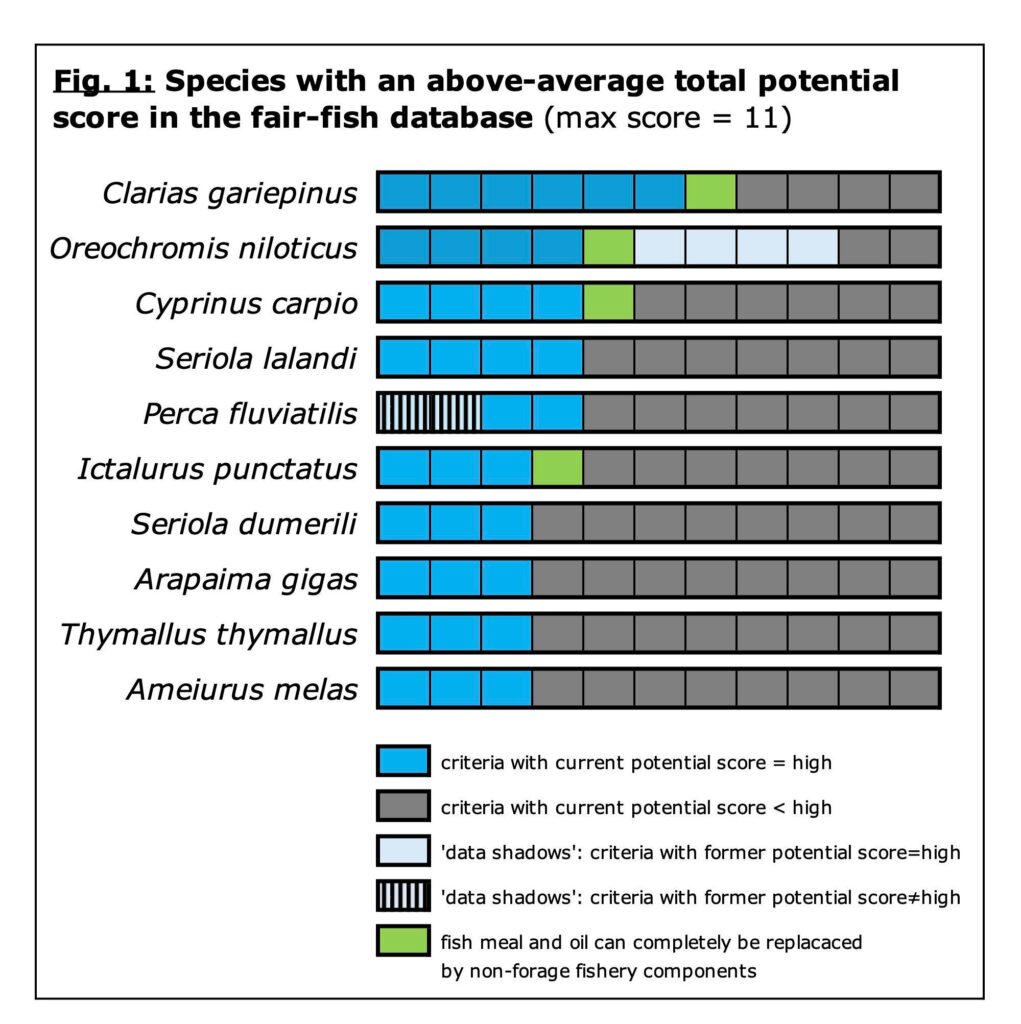
Resources are, as always, limited. Should we then invest in improving some details in the lives of over 500 farmed aquatic animal species, most of which are known not being able to experience welfare in captivity anyway? Or should we rather focus on the few species that possibly may thrive under improved farming conditions?
The science of fish welfare must be careful to not lead to greenwashing. Improving farming conditions for species with very low welfare potential, such as the overwhelming majority of species, may alleviate some of the discomfort of farmed fishes, but cannot make them experience welfare.
The graph shows the few species with a relatively high overall potential of experiencing welfare under best possible farming conditions — all the other out of about 90 species assessed so far show an overall potential of only 2 or lower; most of them do not even exceed potential score 0. Is it wise to focus research and development on species such as salmon, trout, sebream, seabass, etc., that will most probably not feel really well even under best conditions?
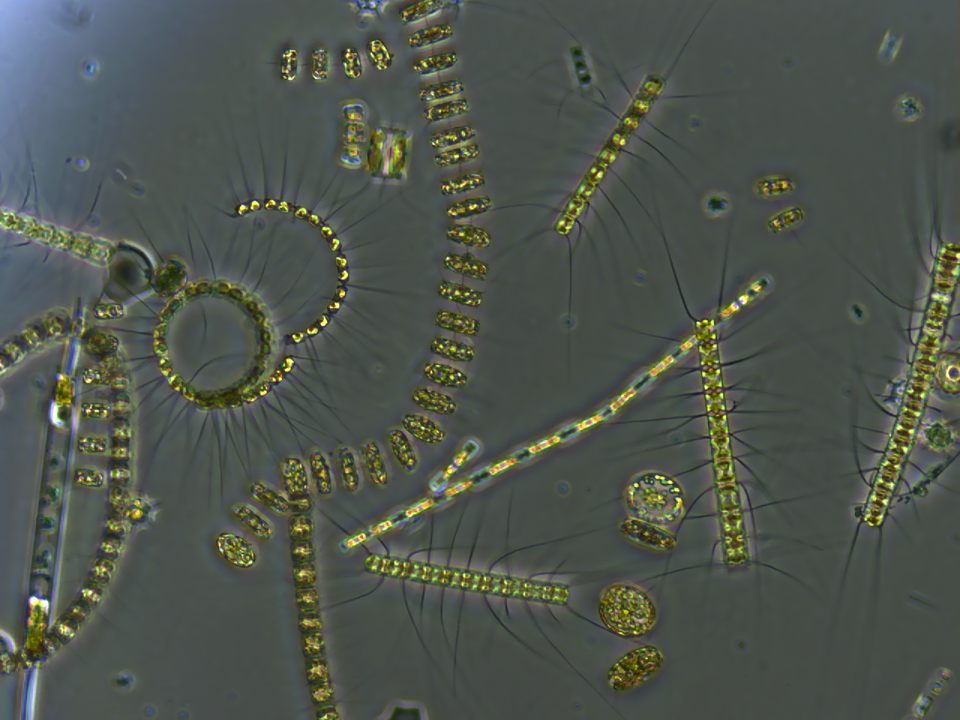
95% of the planet’s biomass is invisible to the naked eye, and most of it is plankton, very tiny plants (phytoplankton such as microalgae) and animals (zooplantkon such as copepods) that live in the water surface area. Microalgae not only form the base of the aquatic food web, but are also the most important origin of the air we breathe (half of the world’s oxygen is produced by microalgae) and of climate stability (half of the global carbon dioxide is absorbed by microalgae).
Furthermore, the much-praised long-chain omega-3 fatty acids found in fish originate from plankton and are only enriched in fish along the food web. If you are looking for pure long-chain omega-3 fatty acids, you do not necessarily have to eat a lot of fish; you can simply take microalgae-based capsules.
Pierre Mollo, a French researcher and teacher of marine biology, has dedicated his entire life to plankton. In his twenties, when films about marine life made a splash, he asked film-makers why they limited themselves to whales, sharks, turtles, and schools of fishes instead of showing the much bigger part of the picture. Eventually, he began filming himself through the lense of his microscope to bring people closer to the fantastic diversity and beauty of plankton. Vulgarisation was also his goal when Mollo founded Océanopolis, the planton observatory in Brest, twenty years ago.
Title picture:
Phytoplankton (credit: Stephanie Anderson / Wikimedia Commons)
Reference:
Pierre Mollo and his Océanopolis
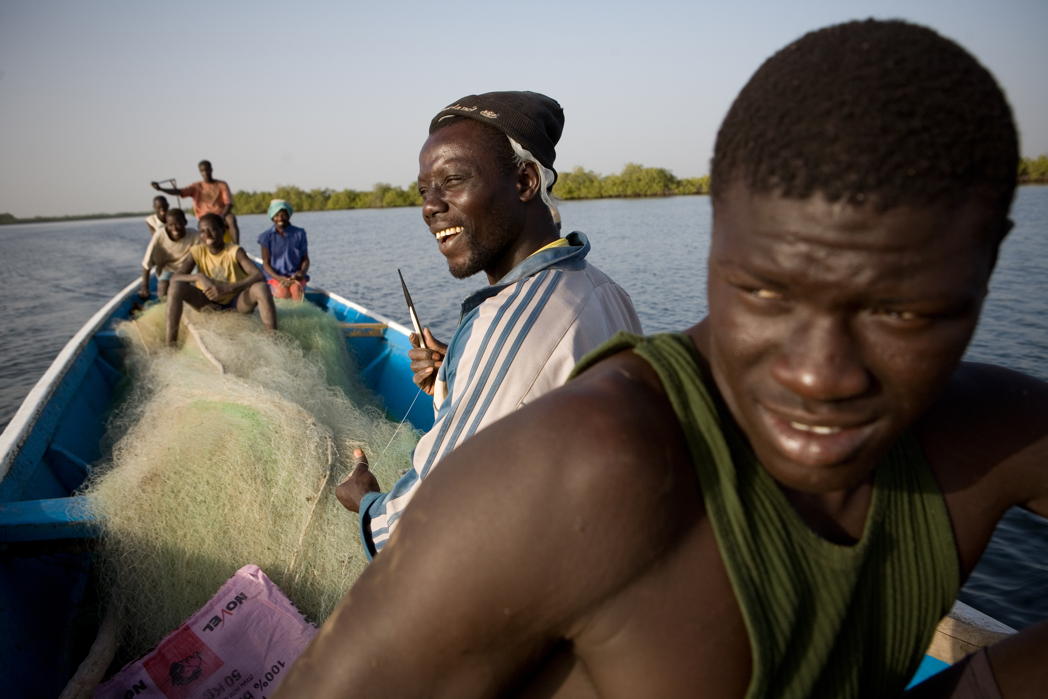
Artisanal fisheries provide 53% of the fish consumed worldwide, 90% of employment in fisheries, predominantly in the Global South, and 54% of all catch sale revenues (see graph below). They could provide even more if they were not harried by industrial fisheries. Instead, artisanal fisheries are disregarded.
Artisanal fisher(wo)men in the Global South complain about the frequent disregard of their human rights and demand that their traditional rights to access to water bodies, fishing grounds, landing and transformation sites, and to the market be recognised.
Fisherwomen in particular complain of discrimination and call for their crucial role in artisanal fisheries, families, and communities to be recognised.
Fishing communities complain of marginalisation and demand access to public infrastructure, social services, and development.
On top of these problems, artisanal fisheries on the shores of seas and lakes are among the first to be affected by global warming and therefore need support to overcome its negative impacts.
This is a short summary of workshops with artisanal fisher(wo)man held during the International Year of Artisanal Fisheries and Aquaculture in 2022, made available through a worth seeing video recently by ICSF [1].
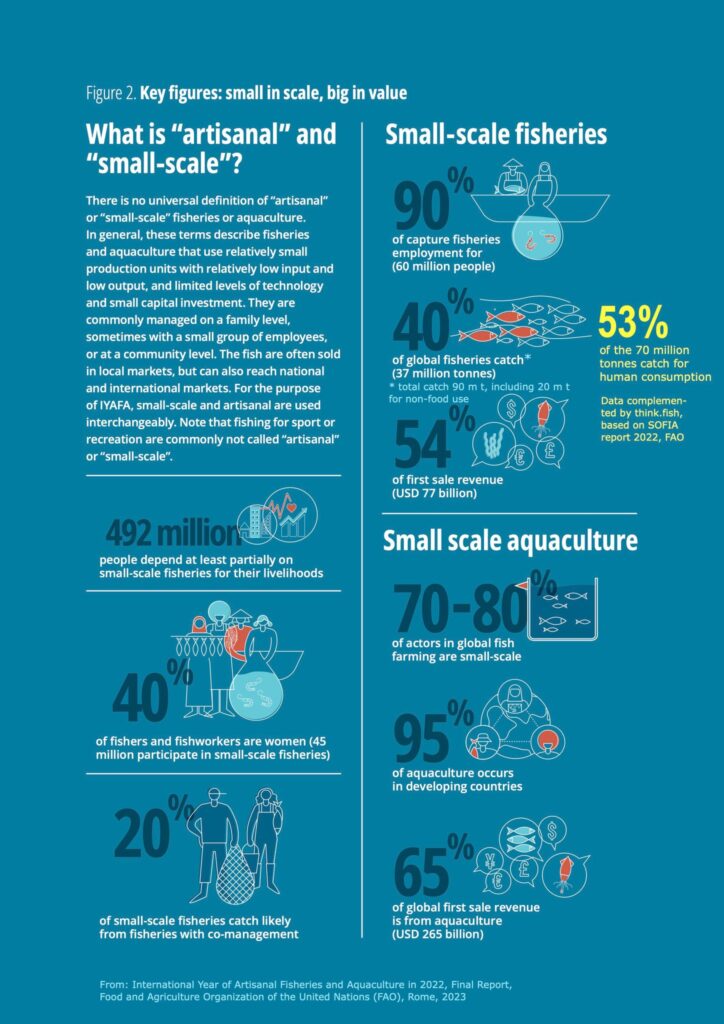
The personal summary of one of the ICSF workshop participants is especially interesting:
‚Maybe we have to look where we haven’t looked before, put ourselves in the skin of the fish.‚
Good point! Putting yourself in the skin of a fish — whether as a consumer, chef,retailer, fishmonger or a primary producer — would also mean to recognise also the rights of the fishes to be at least treated with respect and spared harm as much as possible. It is understandable that fishermen who struggle for their own survival do not pay much attention to the struggle of the animals. A key to substantially reducing animal suffering in fisheries is to improve the living conditions of artisanal fisher communities. The still unrivalled project of fair-fish and artisanal fisheries in Senegal in the noughties [2], which failed because the market was not ready yet, is still waiting for imitators.
Title picture:
Artisanal fishermen on the Saloum, Senegal (credit: Michael Hauri)
Sources:
[1] Video about the ICSF Workshops in the International Year of Artisanal Fisheries and Aquaculture (IYAFA, 2024). Thanks to the International Collective in Support of Fishworkers (ICSF) that organised the workshops reported by this video,
[2] see the in-depth chapter in the fair-fish book about the project in Senegal
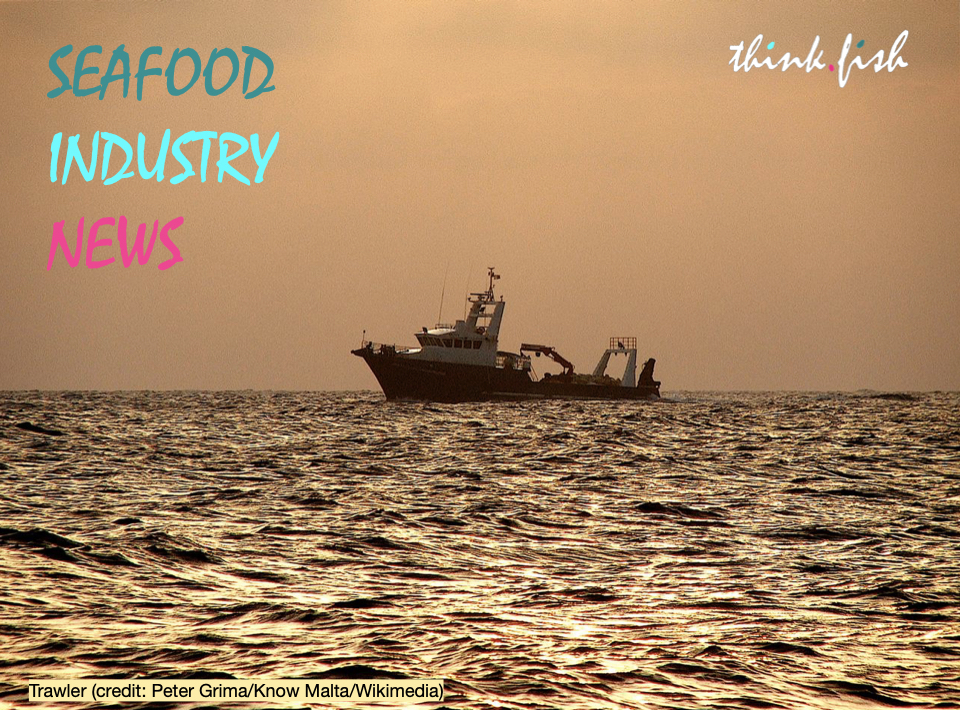
Scottish activist Don Staniford had been forbidden to approach Scottish farming sites of Mowi, the world’s biggest salmon farming company; we reported on it in November 2023 [1]. To be able to continue his investigations on what really happens in industrial salmon farming, Staniford had appealed to the local court which recently followed Mowi’s claim that Staniford has no right to “board, enter onto, physically occupy, attach himself or vessels to all structures, docks, walkways, buildings, floats or pens of Mowi sites” or to “instruct others to act in his place”.
Staniford is not known to give in. Currently he is considering to appeal to the next instance.
More…
[1] What are salmon industry leaders trying to hide?
Die Anlage von Swiss Shrimp bei Rheinfelden ist technisch und betrieblich ein Meisterwerk. Zudem bemüht sich die Belegschaft, den Bedürfnissen der Tiere wenigstens dort nachzukommen, wo es in einem hochindustriellen Umfeld möglich ist. Was derzeit nicht gut läuft, ist der Absatz der frisch geernteten Garnelen. Nach einen Betriebsunterbruch vor einem Jahr wegen Wachstumsproblemen ist die Firma jetzt vom starken Wachstum der Tiere überrascht worden. Beliebig lange können die Garnelen nicht gemästet werden, und tiefgefroren will die Firma sie nicht anbieten.
Das aktuelle Absatzproblem erinnert ein wenig an die einstigen wirtschaftlichen Probleme der technisch perfekten Meeresfischzucht im deutschen Völklingen; dort hatte es beim Start an einem produktadäquaten Marketing gefehlt. Swiss Shrimp hingegen war im gehobenen Schweizer Markt bereits gut eingeführt, daher erstaunen die Verkaufsschwierigkeiten.
Mehr dazu…
Fish farming has long become big business and an attraction to carrier changers. A retired oil rig engineer started to build floating high-tech fish farms at the shores of Singapore. This comes as an attempt to secure the supply with fresh seafood for the inhabitants of the South Asian city state which imports 90% of its food, but hopes to source one third locally by 2030.
The tanks are filled with filtered seawater of a quality that excludes the necessity of antibiotics, and currents in the tanks try to simulate ocean conditions for the fishes. As often in advanced high-tech aquaculture, high product quality and low impact on the environment seem feasible, yet the welfare of the fishes remains questionable. So far, fish welfare has never been the starting point of technical innovation.
More…
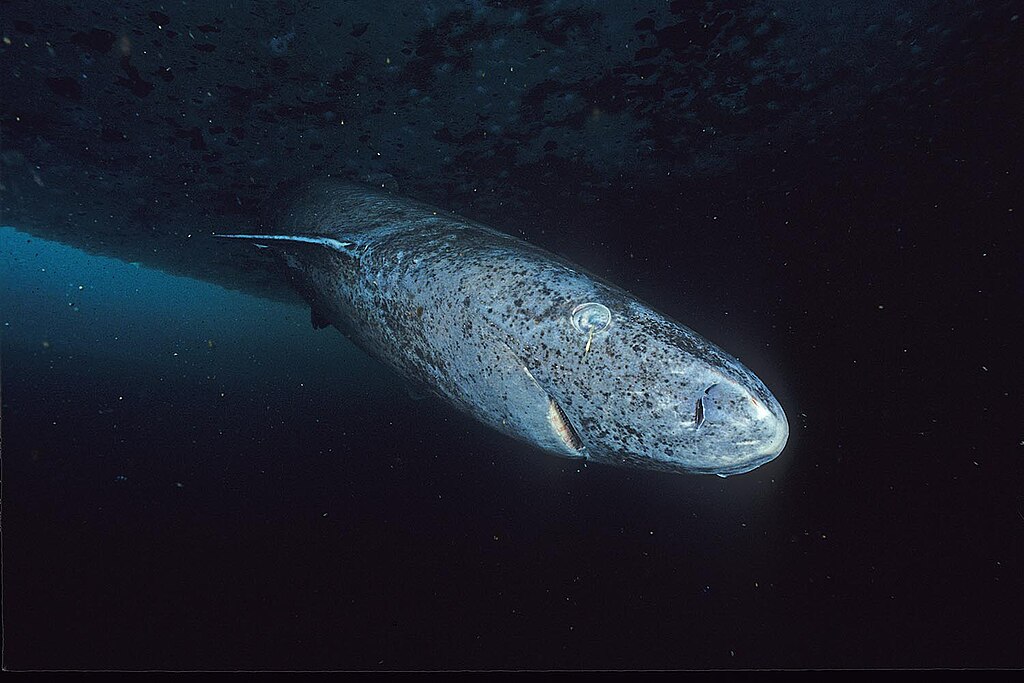
Instead of following a sensible lifestyle, some people who can afford the price and the thoughtlessness are buying shark liver oil products as a dietary supplement to “treat multiple ailments, including wounds, cancer, heart disease, and infertility“. Research is said to have shown ‚health benefits [thanks] to its high alkylglycerol (AKG), squalene, and omega-3 polyunsaturated fatty acid (PUFA, among which Omega-3) content‘ [1].
Squalene plays a role in topical skin lubrication and protection [2] and was first extracted from the liver of sharks (Squalus), hence its name, but is produced by most living organisms. However, the highest squalene content is found in the liver of sharks, especially deepwater sharks and rays whose stocks are therefore overfished, with half of the target species threatened with extinction, according to a recent study [3]. The authors call for ‚immediate trade and fishing regulations‘ to prevent irreversible damage to deepwater species which are especially sensitive to overexploitation due to their late and slow reproduction.
If you are looking for a product that contains squalene, make sure it does not contain shark liver oil from.
And since we’re already talking about it, prefer Omega-3 products made from algae over those made from fish or krill.
Title picture:
The enigmatic Greenland shark (credit: Hemming1952 / Wikimedia Commons)
Find the review of a book on this species, in German: http://billo.ch/blog/?p=2313
References:
[1] Shark Liver Oil: Benefits, Uses, and Side Effects
[2] Squalene
[3] Fishing for oil and meat drives irreversible defaunation of deepwater sharks and rays
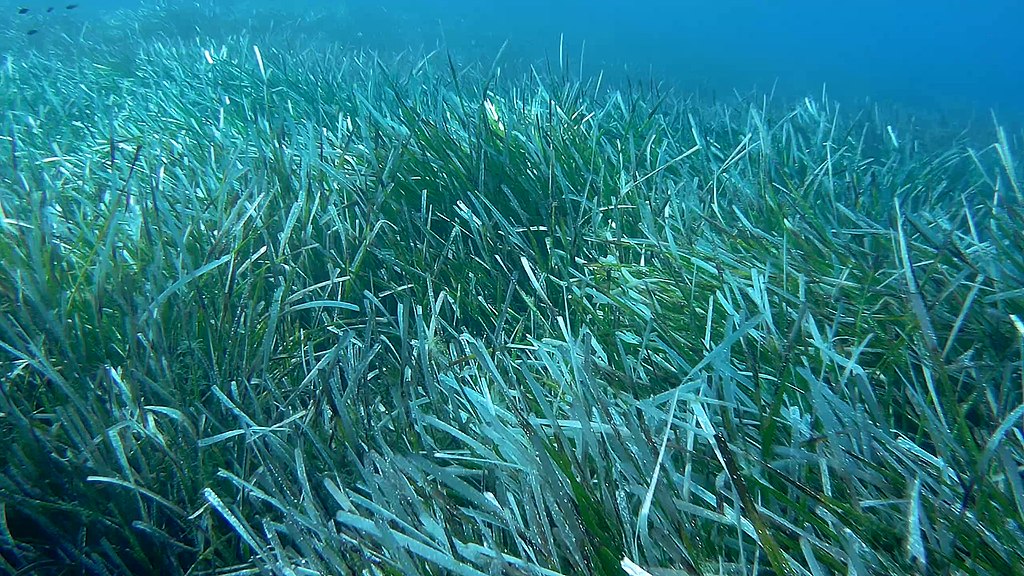
Seagrass meadows are an important part of the vulnerable ecosystem between water and land, a habitat for many species and especially for their offspring. But seagrass meadows have become increasingly endangered along many shores which in turn lose the protection against erosion provided by seagrass roots.
A 30-year-study [1] reveals poor prospects for seagrass meadows. With sea levels rising everywhere, seagrass meadows which grow in shallow water only get increasingly drowned, and many of the new shallow areas along the beaches where seagrass could move to are already occupied by human activities like beach tourism, settlements, harbours, industry, etc.
While seagrass meadows are vanishing at a rate of 7% per year, scientists and conservationists are trying to restore seagrass [2]. Human ingenuity seems to be almost unlimited. However, as sea levels continue to rise, what we need first of all is the allocation of an almost unlimited share of the newly formed shallow areas—where else would we want to restore seagrass?
Picture:
Seagrass meadow (Posidonia oceanica) (credit: Milorad Mikota / Wikimedia Commons)
References:
[1] Rapid sea level rise causes loss of seagrass meadows
[2] A successful method to restore seagrass habitats in coastal areas affected by consecutive natural events
See also (in German) about the Majorcan example in preserving seagrass meadows
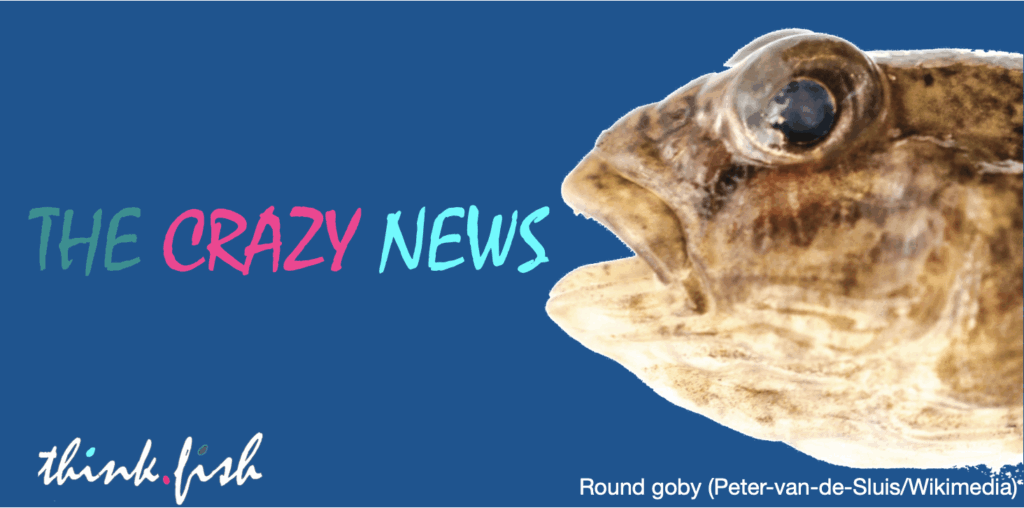
In a SalMar farming site in Norway, 1.2 million young salmons had to be killed “for fish welfare reasons” after string jellyfishes (Apolemia uvaria) had invaded the net cages and began to damage or kill the fishes.
More about it…
After the Scottish fishermen, it’s now up to their Irish colleagues to pretend that Iceland, Faroese and Norway are catching too high share after mackerel stock in the north east Atlantic. It’s kind of a dead end debate between the ones who tried to protect their long ago acquired rights and the ones who profit from the fact that meanwhile the mackerels are swimming higher up north, due to global warming.
More about it…
Background information (in German)
The Thai fisheries industry has long been accused for several harmful practices, like a illegal fishing (IUU), violation of the labour rights, lack in quality, etc. Negative press and phase-out of big retailers in the west urged the Thai government to implement reforms some years ago. The government’s planed roll-back is driven by complaints of fishermen that strict IUU rules were threatening their livelihoods. A broad coalition of international and Thai NGOs urge the government to stick to the reforms.
More about it…
In order to be less dependent on social media, whose owners pursue their own private goals, think.fish posts will first appear on our own blog.
Summaries with a link to our blog will be posted on Facebook, LinkedIn, Substack, Bluesky, Telegram, Mastodon, and Instagram.
animal suffering Animal welfare artisanal fisheries Australia Bangladesh Batäubung Belt-and-Road-Initiative Bio Bio-Lachs Bio Suisse Bosporus Bottlenose dolphin certification Chancay Chile China consumer attitudes Containerhafen cooperation cruelty disease dolphins Don Staniford Einzelgänger escapes EU EU-Bio evolution Exclusive Economic Zone EEC fair-fish fair-fish database farm animals Faroe Fischmehl fisheries management FishEthoGroup fish meal fish oil Fish stocks Fish welfare Gesellschaft Giant tiger prawn greenwashing Humpback whale ICES Illegal fisheries Intelligenz International maritime law Invertebraten IUU Kognition Korruption labels Lachs Latin America Litopenaeus vannamei local communities Marine Protected Areas (MPA) microalgae mortality Nervensystem North-east Atlantic Oceana Oktopoden Omega-3 Pacific whiteleg shrimp Panamakanal Penaeus monodon Peru Philippines phytoplankton Plankton play poaching Posidonia Rainer Froese rproduction Salmon Schifffahrt seagrass sea lice Senegal shark liver oil slaughter small-scale fisheries small scale fisheries Soja-Abwasser solitär South Africa Squalene Subsidies Swissness SwissShrimp Tintenfische UK Water quality welfare potential whales Whale shark Wirbellose